Driving north on Route 6 toward Provincetown on a midwinter day some years ago with my radio tuned in to an interview, I heard a painter talking about how she sees the landscape. To her, she said, it is a composition of color: swaths of shading, blotches of tone, and masses of hues.
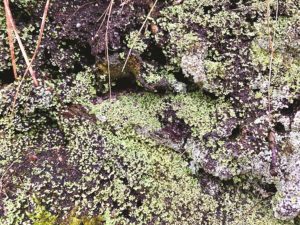
“In the summer,” said the painter, “there is so much green that it feels oppressive.” She much preferred painting in winter, she said, because it offers richer tones, starker contrasts, and nuance.
Just then the road fell away at High Head and the arc of Provincetown and the expanse of East Harbor came into view, with marshes and fields and sand dunes beyond laid out in winter richness, and I saw what I had seen so many times before through a new lens. I wish I knew the painter’s name. I hear her voice every time I see this view.
Our winters are often described as gray. And they are gray, but they are not only gray. If January’s landscape were laid out in front of you in the form of a painter’s palette, you would see a deeply nourishing array of tones, a color scheme a designer might work to perfect the interior of a rustic farmhouse.
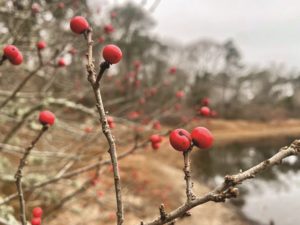
Alongside the cool and warm grays of fog and oak bark, there are the russets and siennas of the dried grasses. Mahogany reds in fields of bearberry and blueberry. The dusty greens of wind-blown pines. There are profound ocean blues, a spectrum of sand tones, a thousand tans and off-whites, soft purples and deep black.
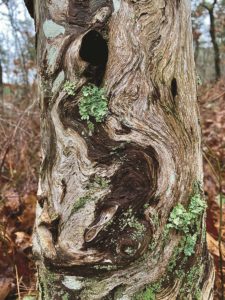
Off to the side, on the edge of the palette, would be a little collection of colors so striking in their vibrance as to seem out of place, mistaken, or reserved, perhaps for a bold stroke. While the grays and blues and tans were arrayed in gallon tubs, these colors would be in smaller containers: the forest greens and russets in quarts, and in tiny thimbles with sealed caps labeled with the words “rare,” “precious,” and “use sparingly” would be the magentas, living green, tangerine orange, and vermillion.
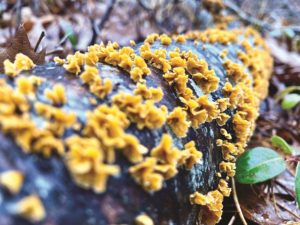
These colors are for special places, tucked in between roots and along pathways. And for specific events: The oranges would be used on foggy wet days when the fungus swells and glows on fallen oak logs. The magentas are for the young stems, buds, and leaf petioles exposed to their first frost. The vibrant living greens are for dashes of moss along the eroding edges of fire roads and pathways that wind through damp forests near ponds. The glaucous green of lichen would be brushed onto stones and the dark coarse peels of pine bark. A tiny speck of delicate purple-pink is for the seaweed left in little snarls of silk cord at the wrack line after a moon tide. Bright red, applied with a fine brush in clustered dots, is for the winterberry along the edges of swamps, and the cardinals perched on branches in a world of soft pale snow. And snow-shadow blue, for just that.
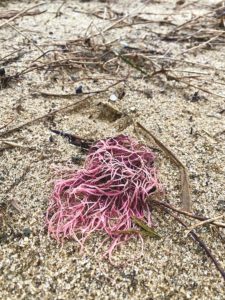
The colors of winter do not put themselves in view like cherry blossoms, held forth bright for the purpose of gathering attention. There are no towers of sunlight-yellow mullein standing in fields. But they are there, especially on misty mornings or in the low sun after days of rain.
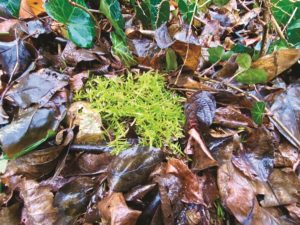
There are two ways to see them. On slow walks, they can be seen close up, at our feet or fingertips. They require that you kneel or stand on your toes. Or they reveal themselves when viewed from a hillside overlook, from a great distance, as a collective, where a hundred thousand tiny streaks on the undersides of stems of grass flush a field imperial purple.



